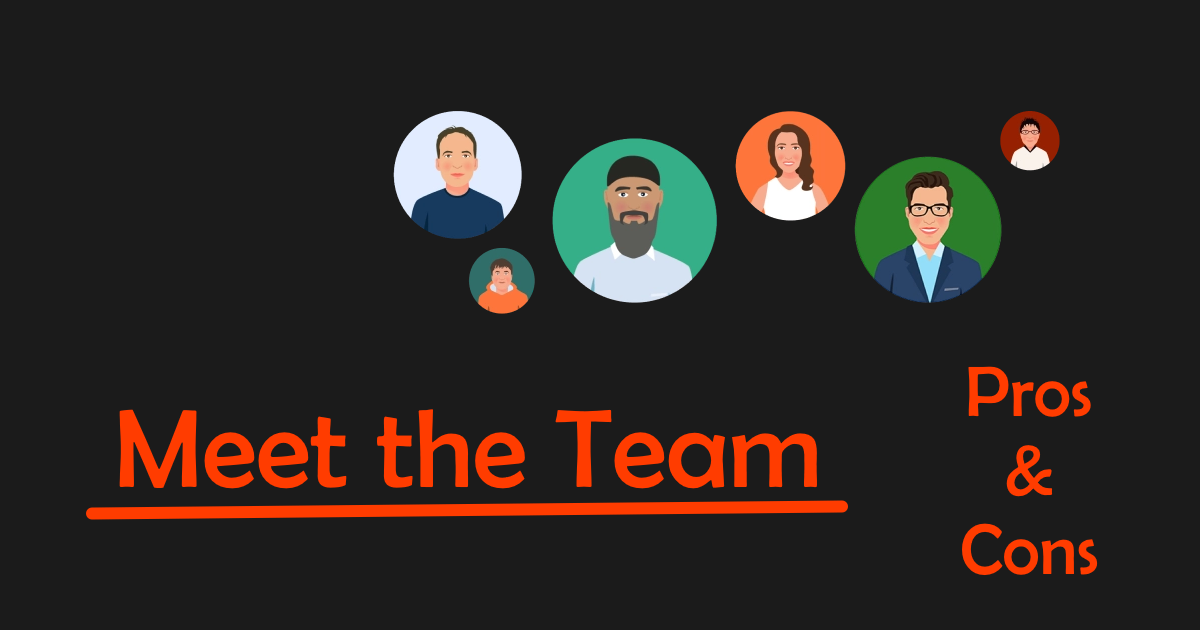Why adding “Meet the Team” to your website could put you at risk.

In today’s digital age, the security risks businesses face are ever-evolving. One of the most commonly overlooked areas of risk is the listing of employees on the company website. While it may seem innocuous to include staff bios and contact information on your website, it can expose your organization to social engineering attacks, which can be extremely damaging. In this article, we’ll discuss the risks of listing employees on your website and how to mitigate them.
Social Engineering and Targeted Attacks
Social engineering is a form of attack where an attacker uses psychological manipulation to trick people into divulging confidential information or performing specific actions. One of the most common forms of social engineering is phishing, where an attacker impersonates a trustworthy entity to deceive a victim into giving up sensitive information or clicking on a malicious link. Phishing attacks can be highly targeted, with attackers using publicly available information to craft emails that appear to come from a known source.
Listing employees on your website provides attackers with a wealth of information that they can use to launch targeted attacks. By researching your employees, an attacker can gather information such as their job titles, email addresses, phone numbers, and even personal details such as their hobbies and interests. With this information, an attacker can craft highly convincing phishing emails that are specifically tailored to individual employees, increasing the chances of success.
Additionally, by listing employee job titles and contact information, attackers can identify potential targets for more sophisticated attacks such as spear-phishing, where attackers use social engineering to target specific individuals within an organization, often with the goal of gaining access to sensitive systems or data.
Mitigating the Risks
So, what can businesses do to mitigate the risks of listing employees on their websites? The following are some best practices that organizations can adopt to minimize the risks:
- Limit the Information Available: Consider limiting the information displayed on your website to only essential details, such as an employee’s name and job title. Avoid including personal information such as hobbies or interests that could be used by attackers to craft targeted attacks.
- Implement Access Controls: Restrict access to sensitive information such as employee contact details, and limit access to only those who require it to perform their job functions. Additionally, implement two-factor authentication for employees accessing sensitive information.
- Educate Employees: Educate your employees about the risks of social engineering attacks and how to identify and report suspicious emails or phone calls. Conduct regular training sessions to reinforce this knowledge and ensure that employees remain vigilant.
- Monitor for Attacks: Implement monitoring and detection tools to identify suspicious activity on your network and systems. Monitor your email systems for phishing attempts, and implement a response plan to quickly contain and mitigate any incidents.
Even a photo can put you at risk
Profile pictures can provide valuable information about an individual, and when used in conjunction with other publicly available information, they can be used to find more information about staff on social sites.
Attackers can use facial recognition software to identify individuals and cross-reference their profiles with other online sources to gather additional information such as job titles, phone numbers, and email addresses. This information can be used to craft highly targeted social engineering attacks, increasing the likelihood of success. Additionally, profile pictures can be used to impersonate an individual, creating a fake account and tricking others into believing that the attacker is a legitimate individual.
This information can be used to gather further sensitive information or launch attacks on unsuspecting victims. Businesses should be aware of these risks and take steps to protect their employees’ privacy, such as limiting the information available on social media profiles and providing education on the risks of sharing personal information online.
Some examples of sites that can be used to search using an image
- Google Images – You can use Google’s “Search by image” feature to search for similar images or to identify an image’s source.
- TinEye – TinEye is a reverse image search engine that allows you to search for images by uploading them or by entering a URL.
- Bing Image Match – Bing’s Image Match feature lets you search for similar images or to identify the source of an image.
- Social Catfish – Social Catfish is a people search engine that can search for people using a picture.
- Pictriev – Pictriev is a face recognition search engine that allows you to search for people using a picture.
Be creative
If you really want to present the friendly face of your team then be creative. Make it interesting to look at, don’t give details. Avoid using names be creative with descriptions if you need them don’t make it easy for hackers who don’t like each person to their LinkedIn page or Facebook or Twitter.
Our advice is you use pictures of your team to create engagement with visitors. Ditch the Meet the Team Page. Introduce your team into the fabric of the site or as buttons to book a meeting or get more information.
Get photographs taken professionally. While smart phones can take brilliant pictures a photographer will simply do a superior job.

Conclusion
Listing employees on your website can expose your organization to social engineering attacks, which can be highly damaging. By limiting the information available, implementing access controls, educating employees, and monitoring for attacks, businesses can reduce the risks and protect themselves against these threats. It’s important to remember that social engineering attacks are constantly evolving, and businesses must remain vigilant to protect against them.

